.jpg)
An artist rendering of the Boeing F-47 sixth-generation fighter shown at the aircraft’s public reveal in March.
By Stephen Borgna
Marketing Communications Specialist
When Boeing’s F-47 sixth-generation fighter was first teased to the public in March, nearly all details of its capabilities remained under wraps. Yet, it’s clear the U.S. Air Force’s next air superiority fighter will feature a suite of advanced technologies designed to dominate the skies for decades.
The F-47 is expected to set the benchmark for fighter technology in the 21st century. But achieving the lofty performance goals of the F-47 – as well as other sixth-generation combat aircraft such as the B-21 Raider bomber and the Future Combat Air System (FCAS) fighter under development by the French, Spanish, and German Air Forces − may not be possible with the speed, weight, and throughput limitations of copper. Pushing the boundaries of military aviation well beyond current fifth-generation capabilities will hinge on fast, secure, interference-free data and signal transmission that's only possible through fiber optic interconnect systems.
What Can The F-47 Do?
As the manned component of the Air Force’s Next Generation Air Dominance (NGAD) program, the F-47 is expected to function as the centerpiece of NGAD’s broad system-of-systems architecture. NGAD is intended to become the primary air superiority element of the U.S. Air Force, eventually replacing the fifth-generation F-22 Raptor in the process.
Its details are still highly classified, so nobody outside of Boeing or the Department of Defense really knows what it can do yet. But we have a rough idea.
While fifth-generation fighters aren’t going away anytime soon, NGAD is the Air Force’s initiative to maintain air superiority throughout contested airspaces well into this century as current technology ages out and new capabilities emerge. NGAD specifies a variety of capabilities it intends to achieve, with about 200 manned fighters serving as its focal point. More than 1,000 unmanned drone wingmen fighters with a high degree of autonomy known as Collaborative Combat Aircraft (CCAs) are called to support the manned fighters, along with a variety of space-based surveillance assets, advanced electronic warfare (EW) platforms, secure command-and-control networks, and more.
These assets will be connected across air, space, and cyber domains through sensor fusion to present a complete real-time picture of the operational environment to the pilot. While the F-22 and F-35 fighters already have advanced sensor fusion capabilities, the F-47 is likely to build on it in multiple possible areas including broader integration with offboard systems (CCAs, satellites, ground-based sensors, etc.), and AI-enabled decision-making support.
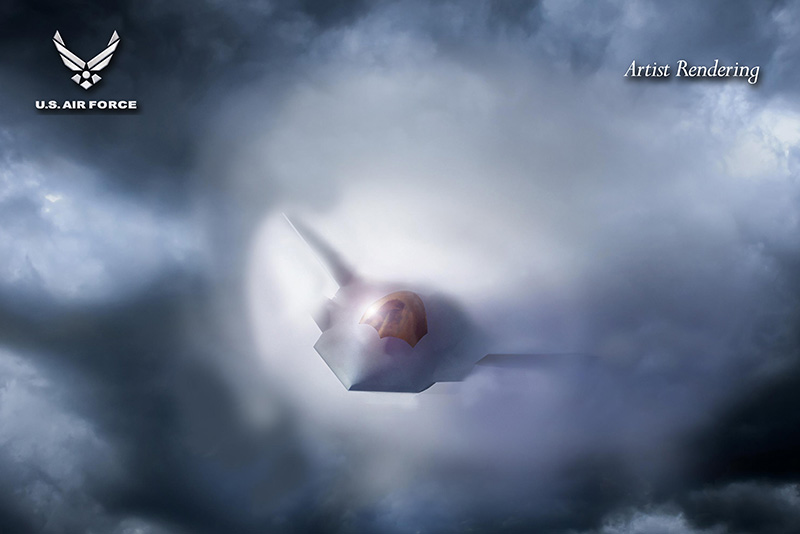
The F-47 aircraft itself is likely to feature a variety of advanced systems, including onboard AI, adaptive mission systems, advanced weapon platforms, and real-time threat response capabilities. It’s rumored to be able to fly faster than Mach 2. The underlying system architecture of the F-47 is also expected to be developed with heavy emphasis on the Modular Open Systems Approach (MOSA) to reduce costs, maintenance, procurement timelines, and development cycles.
The aircraft’s capabilities will surely demand massive data handling in real time, whether for fusing targeting inputs from multiple domains, managing electronic countermeasures, coordinating with drone wingmen, and more.
Just as stealth redefined fifth-generation aircraft, data will define the sixth generation. Everything from threat identification to weapons release may depend on whether the aircraft can manage and act on time-sensitive data before the adversary can respond.
To meet these demands, the contemporary mix of traditional copper and fiber interconnect technology typically utilized throughout modern combat aircraft likely won’t be sufficient on its own. These new aircraft will likely require lightweight, high-bandwidth, and interference-resistant fiber optic interconnects more heavily embedded throughout the platform to achieve next-generation capabilities.
How Will Fiber Optics Be Used in Sixth-Generation Aircraft?
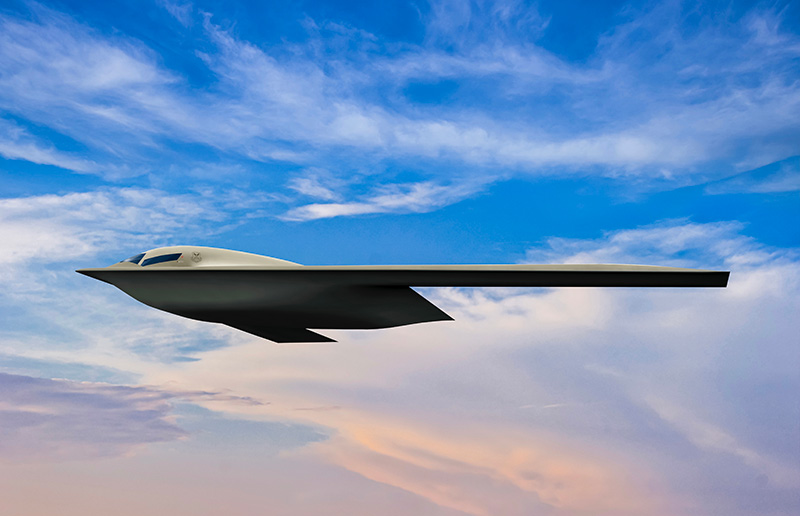
An artist rendering of the Northrop Grumman B-21 Raider.
Fiber is expected to play a much larger role in sixth-generation aircraft such as the F-47 and B-21 than it does in fifth generation aircraft like the F-22 and F-35. The latter are outfitted with some fiber optics but still utilize copper for a lot of legacy system architecture such as electrical wiring, power, and basic signal routing.
With sensor-rich designs, AI-enabled decision support, and real-time coordination with autonomous systems, the amount of onboard and offboard data that’s expected in sixth-generation aircraft that must be moved, processed, and acted on far exceeds the capacity of traditional copper cabling. Not only are fiber optics well-suited for handling this, its resistance to electromagnetic interference (EMI) and radio frequency interference (RFI) will be a key asset in contested airspaces that are saturated with radar and EW activity.
The size, weight, and power (SWaP) advantages of fiber are also key. Because they’re lighter, more compact, and capable of carrying a significant amount of data, fiber optics are ideal for space-constrained platforms with tighter pitches and increasingly dense system architectures. Just as important, they support ultra-low latency connections between onboard systems essential for real-time threat assessment, target prioritization, and autonomous decision-making.
As sixth-generation systems are expected to be developed with a heavy emphasis on MOSA, fiber optics also support rapid system upgrades and modular payload swaps because fiber can carry much more data than copper over a single strand and at higher speeds. When you're upgrading a sensor or processor that requires more throughput, fiber infrastructure is less likely to become a bottleneck. With copper, higher data rates often require thicker cables or new shielding.
How Will Artificial Intelligence Be Integrated into Fighter Jets?
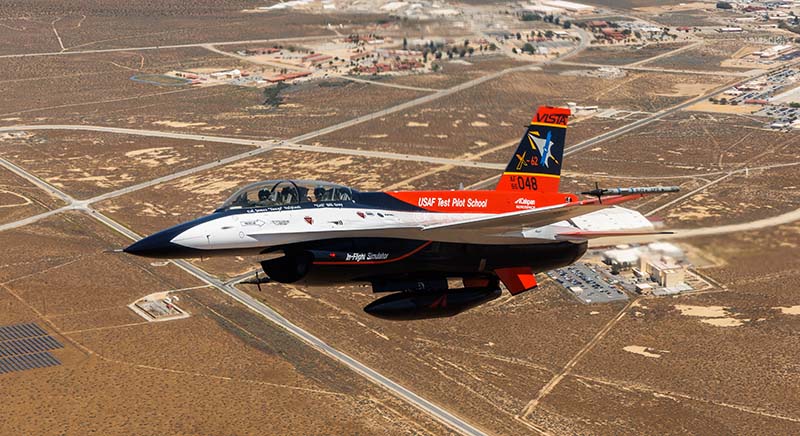
An X-62 VISTA F-16 aircraft modified to be flown by artificial intelligence flies over Edwards Air Force Base on May 2, 2024.
AI is also poised to enhance the pilot’s experience and capabilities in sixth-generation aircraft with onboard AI potentially filtering and prioritizing threats, suggesting courses of action, and more, including potentially initiating engagements under pilot authorization. The widespread integration of artificial intelligence into the system architecture of military aircraft, particularly fighters and strategic bombers, could potentially be one of the biggest breakthroughs in aviation history.
The goal of creating a fleet of unmanned AI-controlled CCAs to fly alongside the F-47 would also be a lofty achievement, and the Air Force recently demonstrated it could do this with the successful test of an AI-powered fighter − a modified X-62 VISTA F-16 that flew autonomously in 2024 (the plane was manned by pilots to provide oversight, and the Air Force intends to always have a human operator present when weapons are involved).
Packing such powerful AI software into a tight sixth-generation airframe and avionics platform will be no easy feat. A comprehensive fiber system will be essential for moving large volumes of data quickly and reliably between processors, sensors, and communication systems to make sure the AI executes its program functions reliably, quickly, and with the pilot’s utmost safety and survivability in mind, without adding bulk or electromagnetic vulnerability.
What is Fly-By-Light Avionics?
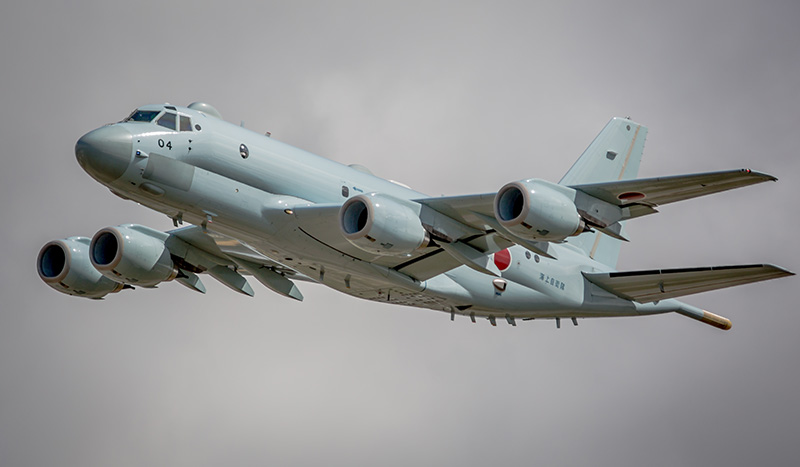
The Kawasaki P-1 of the Japanese Self-Defense Forces is the first production aircraft in the world to utilize a fly-by-light avionics system instead of traditional fly-by-wire.
Fly-by-light (FBL) – sometimes referred to as fly-by-optics (FBO) – is the natural evolution of Fly-by-Wire (FBW). It maintains much of the same overall architecture but replaces copper wires with optical fiber and transmits flight commands as pulses of light rather than electricity. FBL is a faster and lighter system that is resistant to EMI.
The Kawasaki P-1 maritime patrol aircraft operated by the Japanese Self-Defense Forces was the first production aircraft in the world to utilize an FBL system when it entered service in 2013.
FBW has been the de facto flight control system for both military and commercial aircraft ever since the F-16 became the first production aircraft with a fully digital FBW system in the 1970s. An FBW system works by interpreting the movement of the flight controls in the cockpit as electrical signals, which are transmitted via copper wire to a flight computer that processes the input and sends commands to the corresponding actuators throughout the airframe. It was revolutionary upon its introduction, replacing the mechanical and hydromechanical flight controls of the past.
But as the data rates, sensitivity, and electromagnetic complexity of next-generation platforms continue to grow, traditional copper-based FBW systems may no longer be enough.
It’s a good bet that FBL systems will be considered for sixth-generation airframes. With more sensors, more onboard processing, and more electrically noisy environments than any previous fighter, FBL offers a control architecture that’s inherently immune to EMI and capable of supporting high-speed, low-latency signal transmission without adding copper bulk. As platforms like the F-47 push for more tightly integrated avionics, increased autonomy, and next-generation flight control precision, fiber-based FBL systems will provide the signal integrity and routing flexibility those capabilities demand.
Rugged Fiber Optic Solutions Ready for Sixth-Generation Demands
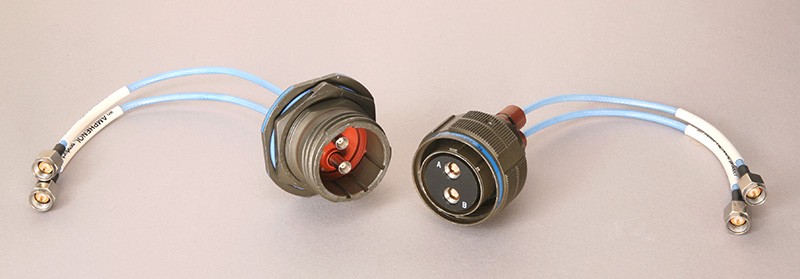
The sixth generation of combat aircraft is approaching fast. As the development of multiple advanced airframes is underway in several countries, Amphenol fiber products are already field-proven in harsh environments and engineered to meet the speed, density, and EMI resistance requirements these next-generation platforms will demand.
From connectors and termini to complete fiber optic assemblies, Amphenol offers a full suite of interconnect solutions built to handle the high-bandwidth, mission-critical data transmission integral to the performance of next-generation avionics, flight control, sensing, processing, AI, communication systems, and more across the platform.
CF38999 Multi-Channel Fiber Optic Connectors

Amphenol CF38999 Multi-Channel Fiber Optic Connectors are the industry standard for high-performance fiber optic connectivity in harsh environments. Built around the MIL-DTL-38999 Series III platform, these connectors feature solid metal-to-metal coupling, recessed termini protection, and superior EMI shielding with performance up to 65 dB at 10 GHz. They’re available in stainless steel or cadmium-over-nickel finishes, are engineered to withstand 500 hours of salt spray, and can operate reliably under high shock, vibration, and temperature extremes. Composite shell options offer weight savings of up to 70%, while durable coupling mechanisms support a minimum of 1,500 mating cycles, making the CF38999 a rugged and reliable choice for military-grade fiber interconnects.
MT38999 Multi-Channel Connectors with MT Ferrules
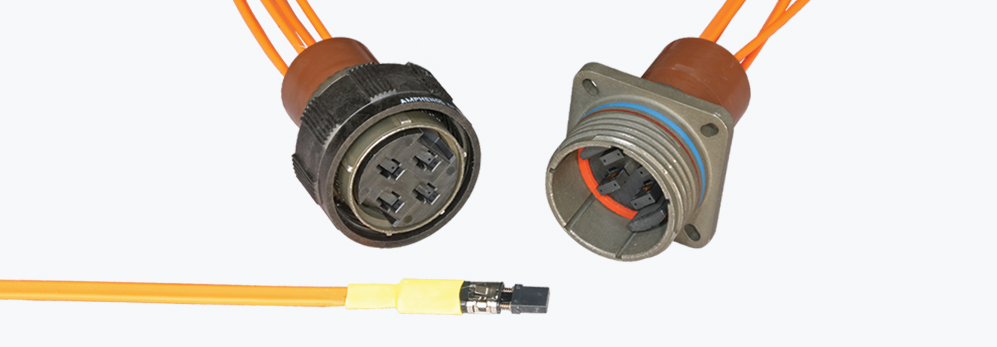
Amphenol’s MT38999 Multi-Channel Connectors with MT Ferrules combine the rugged reliability of a MIL-DTL-38999 Series III circular shell with the high-density performance of MT ferrules. These connectors support up to four ferrules per shell and are available in configurations for 12 or 24 fibers per ferrule. Precision alignment is built in through shell-to-shell keying, guide pins, and plug-to-receptacle mating. Offered in both multimode and singlemode PC or APC variants, the MT38999 is ideal for systems demanding robust, high-bandwidth optical interconnects in a reduced footprint.
High-Speed Optical Transceivers
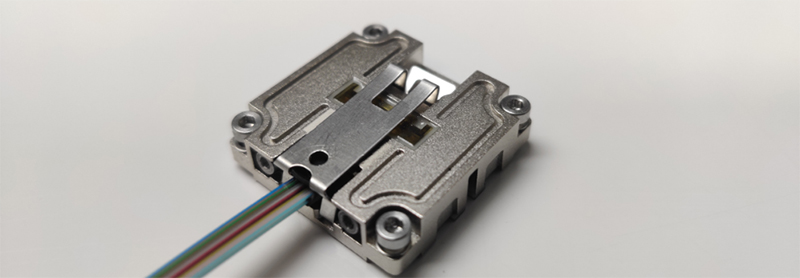
Amphenol’s portfolio of high-speed optical transceivers delivers rugged, compact, and high-performance data transmission solutions for mission-critical systems. Supporting data rates from 25 Mbps up to 50 Gbps across 1 to 12 optical channels, these transceivers are designed for minimal SWaP-C impact and easy integration into VITA- and SOSA-aligned architectures. Amphenol transceivers deliver fast, uninterrupted communication in systems operating in harsh environments where space is limited and performance is non-negotiable, such as in next-generation avionics, radar, and unmanned platforms.
Explore the full range of Amphenol’s fiber optic interconnect solutions here: Amphenol Military High Speed.